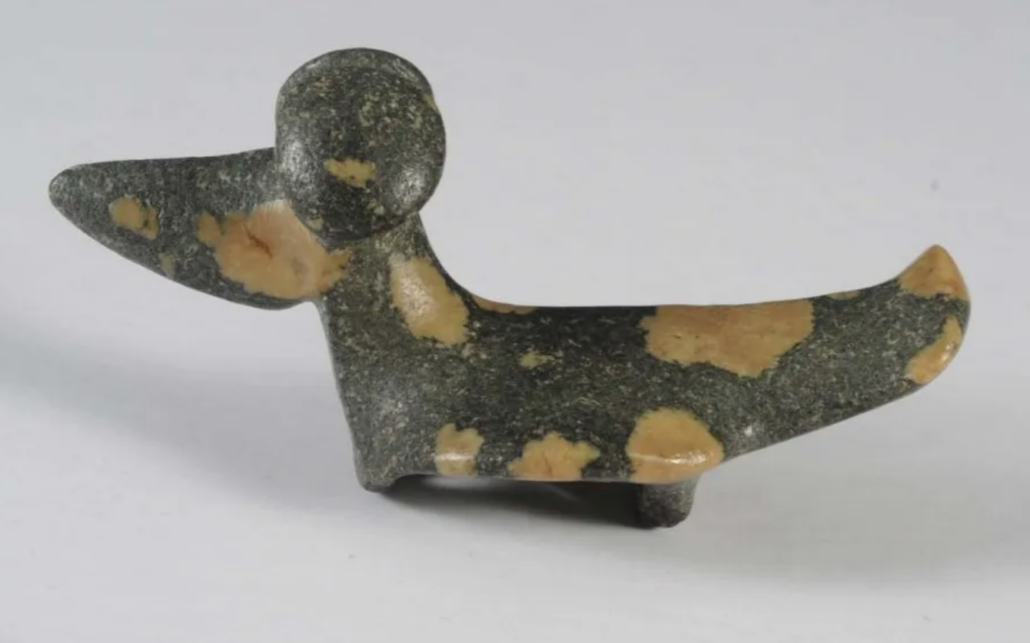
NEW YORK — Thousands of years ago, after the last glacial period ended, the Native Americans of North America carved stones for tools, weapons and also as artful objects. Chief among the Archaic period (circa 4000-1000 BCE) objects whose original function has been lost to history are porphyry birdstones. Highly polished and sculptural, they gained the name “birdstones” because they resemble birds, though some can look more like dogs or lizards. The most striking and desirable examples are made from porphyry, an igneous rock with a pattern of light-colored coarse crystals that looks almost like splotches. These splotches, which are often cream-colored, are known as phenocrysts. The contrast between these phenocrysts and the dark backdrop rocks, which often have a blueish to purple tone, adds to a birdstone’s appeal.
Carving birdstones from porphyry had to be challenging, as the rocks were hard like granite. The current consensus is only about 10 percent of birdstones were fashioned from porphyry. Once the carving was finished, Native American artisans polished their birdstones to achieve a nice sheen.
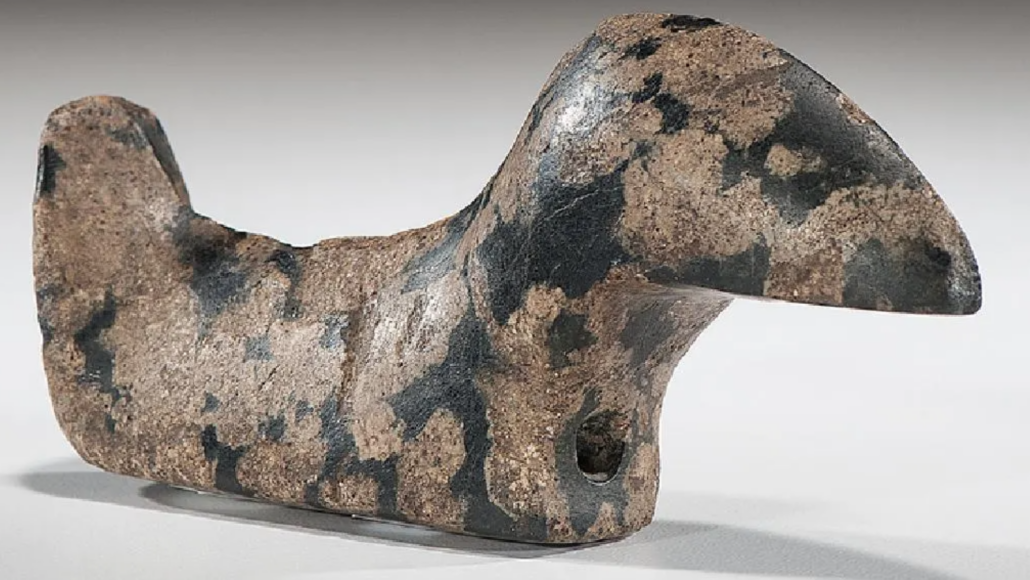
Birdstones vary in size from an inch or so to about five inches long, and most have a pair of holes drilled near the base and neck. Some experts have speculated the holes indicate these objects were mounted on spears, for use as a counterweight. Others suspect birdstones were probably effigy objects that were used in ceremonies. Whatever their purpose, the drilled holes introduced details that were at risk of breaking off the body of the sculpture, so examples in perfect condition bring top dollar. A fitting example is the Parks porphyry popeye birdstone, which survived in great condition and with striking color. It sold for $300,000 plus the buyer’s premium in May 2014 at Dan Morphy Auctions, and represents the highest price recorded so far in LiveAuctioneers’ price results database.
A year earlier, a renowned collection of prehistoric artifacts, including more than 50 birdstones, was offered at Tony Putty Artifacts. A few of the birdstones brought more than $100,000 each. The collection was assembled by Earl Townsend Jr., who in 1959 wrote the definitive book on birdstones, titled Birdstones of the North American Indian.
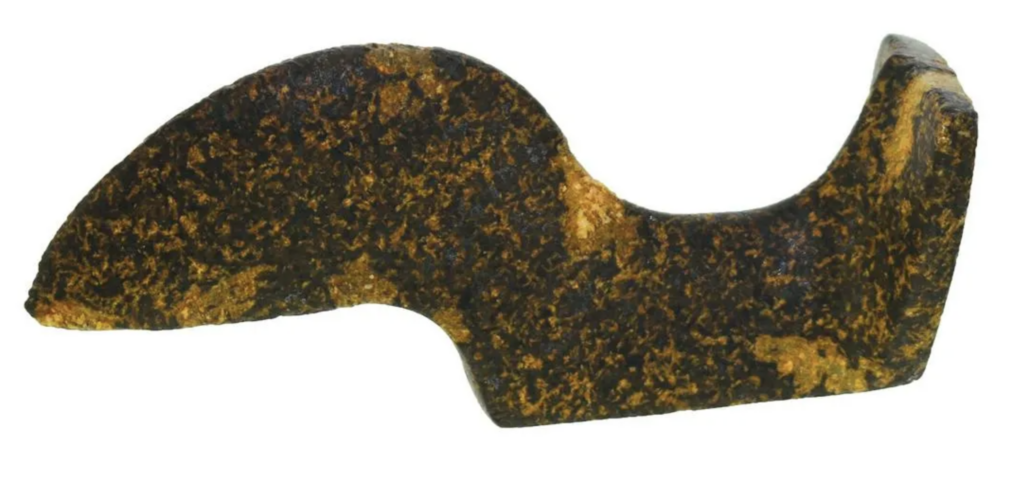
According to the Robert S. Peabody Institute of Archaeology at Phillips Academy in Andover, Massachusetts, Townsend noted that most of these highly stylized birdstones have been found in fields throughout a large area that spans sections of New York state to the Great Lakes region and up into Canada. The example sold in 2014 at Morphy’s was discovered by a farmer digging potatoes in Indiana in 1950. The original use and material context of birdstones becomes cloudier and harder to pinpoint because they show up in fields instead of archaeological settings, such as a village. While this is unfortunate, it does nothing to detract from their beauty or from collectors’ appreciation of them.
Many birdstones have protrusions from the tops of their heads that are dubbed ‘eyes’ even though they might look more like ears. Birdstones with eyes that project far from the body are sometimes called ‘popeye’ examples. As with the drilled holes and the tails, these eyes are vulnerable to breaking, so intact pieces are highly sought after. Birdstones that emerged in what is now New York, Wisconsin, and Ontario share overall similarities but take distinct forms that reflect cultural differences. “The virtuosity of manufacture, incredible symmetry, and sculptural quality have often elicited comparison with modern art,” the institute says on its website.
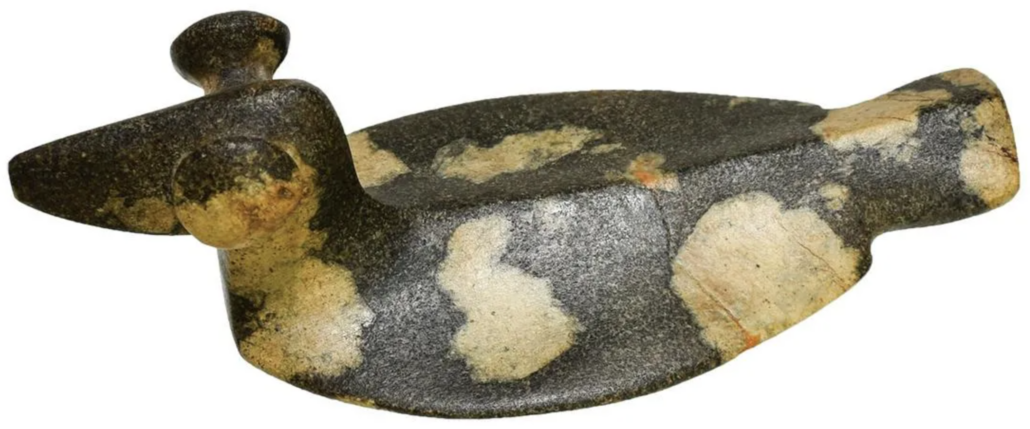
A five-inch-long Zakucia popeye porphyry birdstone, which made $260,000 plus the buyer’s premium in December 2019 at Tony Putty Artifacts, is a beautiful example of a highly stylized so-called “swimming” bird that is definitely akin to fine art. The long stone with a slim profile was found in 1884 by a man digging a cellar in western Pennsylvania. The majority of known birdstones were located between the late 1800s and the early 1950s.
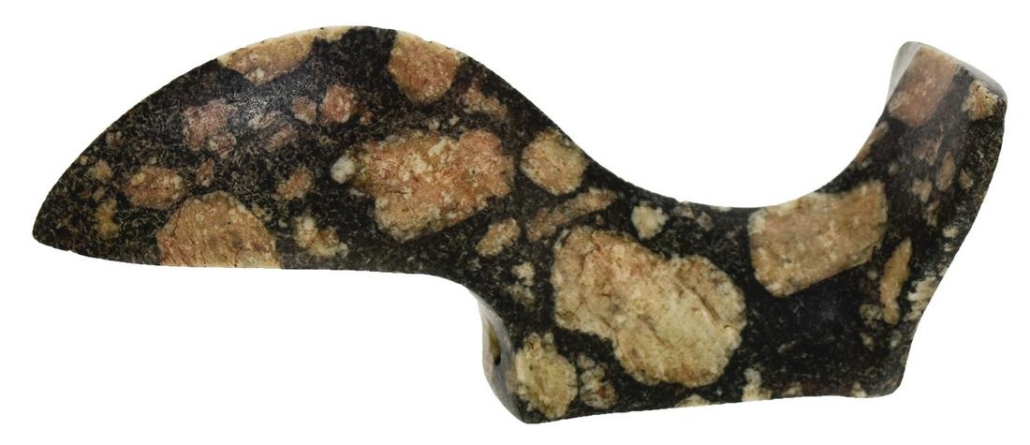
Birdstones with upturned tails are fairly rare and examples with this styling typically perform well at auction. A Vermont example described as a fantail birdstone, measuring four and a half inches long, was found near Burlington, Vermont in 1846. It attained $280,000 plus the buyer’s premium in February 2020 at Tony Putty Artifacts.
We don’t know why Native Americans of long ago carved these beautiful forms, and we might never know for sure. Moreover, we don’t know why some ancient artisans occasionally went to the trouble of carving them from rock that was far harder to work with. Their craftsmanship and natural beauty ensures they will continue to be appreciated thousands of years after they were created.



